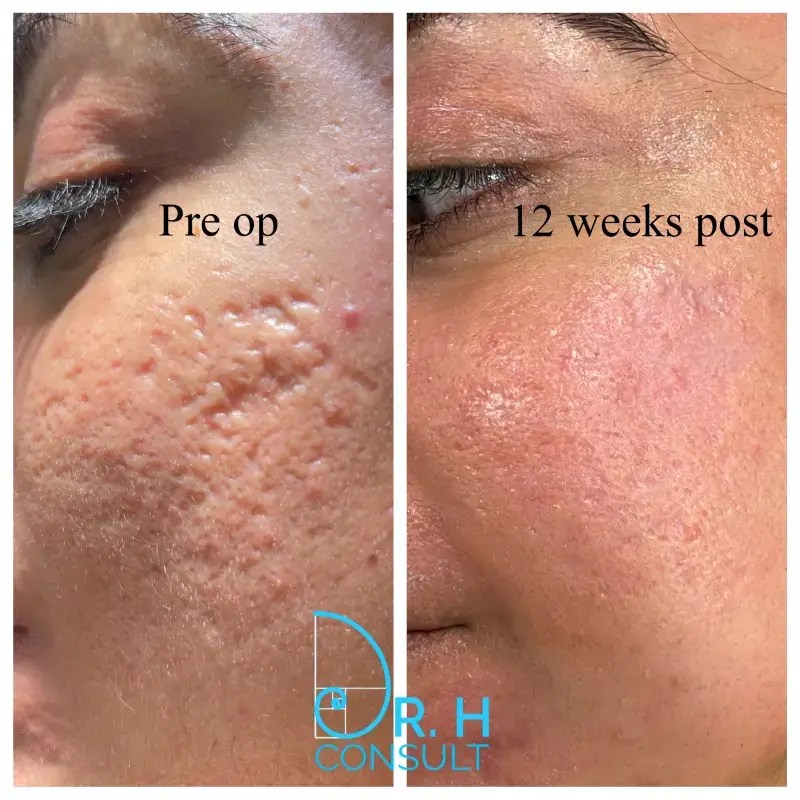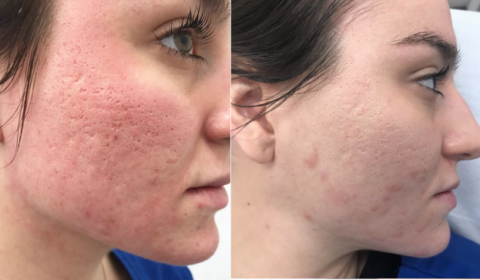Discovering Skin Problems: Recognizing and Treating Acne Scars for Healthier Skin
Acne marks represent a substantial problem for people looking for to maintain healthy and balanced skin, as they can affect both appearance and self-confidence. Understanding the different kinds of marks, from atrophic to hypertrophic, is vital for determining ideal treatment alternatives.
Understanding Acne Scars
Comprehending acne marks is essential for any individual that has experienced extreme acne, as these marks can have a lasting influence on both physical look and emotional wellness. Acne marks form when the skin goes through inflammatory feedbacks throughout active acne lesions. The extent of scarring is typically affected by variables such as the sort of acne, its duration, and individual skin qualities.
The body's natural healing process can lead to either atrophic scars, which look like anxieties in the skin, or hypertrophic marks, which are raised and result from overproduction of collagen. Additionally, the mental toll of acne scars ought to not be ignored; several individuals report sensations of shame, anxiety, and lowered self-esteem. This psychological problem can influence social communications and total top quality of life.
Resolving acne marks needs a comprehensive understanding of their development and influence. Awareness of the potential for lasting effects linked with untreated marks can encourage people to seek appropriate therapies. Early treatment and effective monitoring approaches can dramatically enhance skin appearance and enhance emotional durability, emphasizing the significance of understanding the intricacies surrounding acne marks.
Sorts Of Acne Scars
Acne marks can be categorized into unique kinds, each showing special qualities and needing specific treatment methods. The key sorts of acne marks consist of atrophic, hypertrophic, and keloid marks.

Hypertrophic marks, in comparison, are elevated above the skin degree and are the result of excessive collagen manufacturing during the recovery procedure. They normally continue to be within the borders of the initial acne lesion. Keloid marks are similar however extend past the original injury website, developing bigger, raised locations that can be itchy or uncomfortable.
Understanding these sorts of scars is crucial for choosing suitable treatment choices. Various marks might respond better to specific therapies, such as laser treatments, fillers, or surgical interventions, emphasizing the relevance of a tailored approach to acne mark monitoring.
Recognizing Your Marks
When reviewing the appearance of your skin, it is critical to precisely recognize the sort of scars present, as this will inform the most reliable therapy method. Acne scars generally fall under 2 classifications: hypertrophic and atrophic scars. Atrophic marks, which are one of the most typical, look like depressions or impressions on the skin. These can further be identified into ice-pick marks, boxcar scars, and rolling scars, each displaying unique characteristics and requiring various methods for evaluation.
Hypertrophic marks, on the other hand, are elevated and occur due to extreme collagen manufacturing during the recovery process. Identifying the particular features of your marks-- such as appearance, depth, and width-- is important for correct identification. Furthermore, take into consideration the circulation of scars throughout your skin, as this can indicate the seriousness and period of the acne problem.
Engaging with a skin doctor can offer useful understandings into the nature of your scars, helping in the distinction in between various types. A thorough understanding of your scars will eventually bring about a more tailored and efficient treatment plan, ensuring a more clear and healthier skin tone.
Therapy Options Readily Available
Identifying the specific sort of acne scars present on your skin prepares for checking out efficient treatment options. Usual kinds of website here acne scars include atrophic (depressed), hypertrophic (raised), and post-inflammatory erythema.
For atrophic marks, choices such as chemical peels, microneedling, and laser resurfacing are extensively utilized. Chemical peels off utilize acids to remove the external layer of skin, promoting brand-new cell growth. Microneedling entails little needles that produce micro-injuries, stimulating collagen manufacturing. Laser resurfacing targets damaged skin cells, enhancing structure and tone.
Hypertrophic scars can be treated with corticosteroid shots to squash the scar or laser therapy to minimize redness and enhance appearance. acne treatment for sensitive skin. Silicone gel sheets and pressure dressings might also help in handling elevated marks
Additionally, dermal fillers can briefly fill in depressions from atrophic scars, while medical excision might be appropriate for severe instances. Each treatment option has its benefits and considerations, making it vital to seek advice from a skin specialist. They can offer personalized suggestions based on the kind and extent of your marks, in addition to your skin kind and overall health and wellness.
Tips for Avoidance
Reliable prevention methods can substantially reduce the probability of developing acne marks. Utilizing non-comedogenic products helps avoid blocked pores, which can exacerbate acne.
Preventing need to choose or stand out acne sores is crucial, as this can cause deeper skin damages and boost the risk of scarring. Instead, consider using a chilly compress or over the counter treatments to reduce swelling and redness.
Sunlight defense is another vital element of prevention; ultraviolet (UV) rays can darken marks and hinder the recovery procedure. Applying click for info a broad-spectrum sun block with at least SPF 30 daily can protect the skin and advertise also healing.
Finally, keeping a well balanced diet plan abundant in you could try this out vitamins, minerals, and anti-oxidants supports skin health and recovery. Remaining moisturized and handling anxiety levels can also play a considerable role in lowering acne flare-ups. By applying these techniques, individuals can substantially lessen their opportunities of creating acne marks.

Final Thought
In final thought, understanding and identifying acne scars is necessary for effective treatment and attaining much healthier skin. Different kinds of acne marks, including atrophic and hypertrophic scars, demand details interventions tailored to individual needs. Treatment alternatives array from chemical peels and microneedling to corticosteroid injections, highlighting the relevance of seeking advice from a skin specialist. Furthermore, taking on a mild skincare regimen and protecting the skin from UV exposure can considerably add to the prevention of additional scarring and total skin health.
The body's all-natural recovery procedure can result in either atrophic marks, which show up as anxieties in the skin, or hypertrophic scars, which are raised and result from overproduction of collagen. They are further split into three subtypes: ice choice scars, boxcar marks, and rolling scars. Acne scars normally drop into two classifications: atrophic and hypertrophic marks. These can further be categorized right into ice-pick marks, boxcar marks, and rolling scars, each displaying distinctive characteristics and requiring different approaches for analysis.
Numerous kinds of acne marks, consisting of hypertrophic and atrophic marks, necessitate details treatments tailored to specific needs.